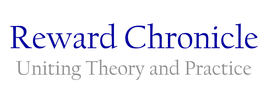|
Does age moderate the effect of HR and organizational practices on employee commitment? A recent study on banking employees asked this very question and found that it did. Across a range of practices including reward, training, teamwork, and communication, age was found to impact on the role of these practices on employee commitment. Reward was found to have the greatest impact on commitment, and was a strong determinant of commitment levels across all age groups but was most influential in younger employees.
Key Topics: Affective commitment; Age; Teamwork; Training; Communication
Title of Reviewed Article: Organizational Factors and Affective Commitment: Moderating Role of Employees’ Age
Researchers: Feryal Khan, Amina Talat, and Sana Azar (Lahore School of Economics). Publication: Pakistan Journal of Psychological Research, 2015, Vol. 30 No. 2, p.p. 405-419. __________________________________________________________________________ Setting the Scene Employee commitment to the company they work for is a well-established key determinant in positive organizational outcomes, such as reduced employee turnover and higher productivity (Smidts, Pruyn, & Van Riel, 2001; Vallas, 2003). The current study examines affective commitment specifically, which refers to the relationship that an employee has with their company and relates to their loyalty and identification with the company (Lambert, Hogan, Paoline, & Clarke, 2005). Employees with strong affective commitment stay with a company because they want to rather than because they feel they need to or ought to (Allen & Meyer, 1996), and as such affective commitment is a particularly desirable type of commitment. Research indicates that both organizational (e.g., rewards, training) and demographic factors (e.g. age, gender) act to encourage organizational commitment (e.g. Brimeyer, Perrucci, & Wadsworth, 2010). Studies looking at organizational commitment across different age groups have typically found differences (e.g. Meyer et al., 2002). Younger employees are less likely to be looking for long term bonds with a company and are more likely to have frequent job changes than older employees (Pathardikar & Sahu, 2011), while Mathieu and Zajac (1990) found that older employees had greater affective commitment than their younger counterparts. Research suggests that organizational factors have a strong influence on commitment. Rewards, such has additional compensation or promotion opportunities have been shown to have a strong link with commitment across multiple age groups (e.g. Su, Baird, & Blair, 2009). Su et al. (2009) also found training to have a positive effect on affective commitment, particularly in younger employees. Likewise, research suggests that strong teamwork and communication in a company leads to greater affective commitment among employees of various ages (Costa, 2003; Malhotra et al., 2007). This study put forward a number of research questions: Hypothesis 1 – “Organizational factors (i.e., training, teamwork, communication, and rewards) contribute positively to workers’ affective commitment of bank employees.” Hypothesis 2 – “Employees’ age moderates the relationship between affective commitment and the workplace factors organizational commitment.” How the research was conducted The participants for this study consisted of 200 managerial level bank employees from 35 bank branches in Pakistan. All participants were permanent employees and categorized as lower, middle, or upper management. Participants took part through completion of a survey. Affective commitment was examined, along with organizational factors (i.e. communication, teamwork, training, and rewards) and demographic factors (i.e., age, which consisted of three groups – Below 31, 31 to 44, and above 44 years). Affective commitment was determined using Allen and Meyer’s (1990) 8-item Affective Organizational Commitment Scale. Organizational factors were assessed using Lau and Idris’s (2001) Employees’ Perception of Organizational Factors Scale, which included subscales for Communication, Training, Rewards, and Teamwork. Key Research Findings Affective commitment was found to be related to the organizational factors of communication, teamwork, training, and rewards. As such Hypothesis 1 was supported. Of these organizational factors, reward was found to have the highest positive effect on affective commitment. Hypothesis 2 proposed that the effect of organizational factors on affective commitment will differ by age, and the study results mostly supported this proposition. The results showed that aside from teamwork, the impact of the other three organizational factors did vary by age group. For those below 31, rewards, training, teamwork, and communication were all predictors of affective commitment. For those between 31 and 44, communication, teamwork, and rewards were predictors of affective commitment. For those over 44, only teamwork and reward were a predictor of affective commitment. Results Commentary The finding that age impacts on the relationship between these organizational factors and affective commitment is an interesting one. What it suggests is that employees at different points in their life will value and engage with organizational factors differently. The different impact of organizational factors by age is also likely to reflect the varying working environments that employees may experience at different points in their life, for example older employees may be more negatively affected by job insecurity and work-life balance issues (e.g. Rubin & Brody, 2005). Training was found to be most impactful on the commitment of younger employees, which is consistent with prior research which suggested that younger employees show higher commitment levels to companies that invest in their development (Delarue et al., 2008), whereas older employees place less value in this. Younger employees also placed more value on communication within a company, which may reflect their need for more guidance and direction from the company than older employees. Reward was found to have a strong impact on commitment across all age groups, although it was slightly more impactful with younger employees, possibly reflecting the greater influence of extrinsic rewards on younger employees. Organizational and Reward Implications The implications of this study’s findings are twofold. Firstly, it shows that various organizational factors can impact on the affective commitment of employees. Secondly, this study illustrates the importance of age in the organizational factor - affective commitment relationship. Companies should take heed of these findings in pursuing greater affective commitment from employees. The importance of HR practices in increasing affective commitment is apparent and companies should consider strategies that include elements of reward, training, teamwork, and communication, as well as considering other organizational factor which may be complementary. These factors can help to develop greater work experiences for employees, which in turn can lead to greater commitment. Additionally, what this study suggests is that a one size fits all strategy may not be most effective and that a strategy that takes account of demographical differences such as age is likely to yield the greatest increase in affective commitment. Final Thoughts This study serves to further reinforce prior research on the link between age and HR practices as well as on affective commitment, and sheds light on these relationships in a banking sector context. As with many similar studies, this study examines the perceptions of current employees (i.e. those committed enough to stay with the company), and future research would benefit from examining these relationships with current and past employees. __________________________________________________________________________ Source Article: Khan, F., Talat, A., & Azar, S. (2015). Organizational Factors and Affective Commitment: Moderating Role of Employees’ Age. Pakistan Journal of Psychological Research,30(2), 405-419. Published by: National Institute of Psychology, Pakistan For further details and access to the full journal article Click Here (subscription or payment may be required). __________________________________________________________________________ References: Allen, N., & Meyer, J. (1990). The measurement and antecedents of affective, continuance, and normative commitment to the organization. Journal of Occupational Psychology, 63(1), 1-18. Brimeyer, T., Perrucci, R., & Wadsworth, S. (2010). Age, tenure, resources for control, and organizational commitment. Social Science Quarterly, 91(2), 511-530. Costa, A. C. (2003). Work team trust and effectiveness. Personnel Review, 32(5), 605-622. Delarue, A., Hootegem, G. V., Procter, S., & Burridge, M. (2008). Team working and organizational performance: A review of survey-based research. International Journal of Management Reviews, 10(2), 127-148. Lambert, E. G., Hogan, N. L., Paoline, E. A., & Clarke, A. (2005). The impact of role stressors on job stress, job satisfaction, and organizational commitment among private prison staff. Security Journal, 18(4), 33-50. Lau, H., & Idris, M. (2001). The soft foundation of the critical success factors on TQM implementation in Malaysia. The TQM Magazine, 6, 51-62. Malhotra, N., Budhwar, P., & Prowse, P. (2007). Linking rewards to commitment: An empirical investigation of four UK call centres. International Journal of Human Resource Management, 18(12), 2095-2128. Mathieu, J., & Zajac, D. (1990). A review of meta-analyses of the antecedents, correlates, and consequences of organizational commitment. Psychological Bulletin, 108(2), 171-194. Meyer, J. P., Stanley, D. J., Herscovitch, L., & Topolnytsky, L. (2002). Affective, continuance, and normative commitment to the organization: A meta-analysis of antecedents, correlates, and consequences. Journal of Vocational Behavior, 61, 20-52. Pathardikar, D., & Sahu S. (2011). Implications of the organization cultural antecedents on organizational commitment: A study in Indian public sector units. Global Business Review.12 (3), 431-446. Rubin, B., & Brody, C. (2005). Contradictions of commitment in the new economy: Insecurity, time, and technology. Social Science Research, 34(4), 843-861. Su, S., Baird, K., & Blair, B. (2009). Employee organizational commitment: The influence of cultural and organizational factors in the Australian manufacturing industry. The International Journal of Human Resource Management, 20(12), 2494-2516. Smidts, A., Pruyn, A., & Van Riel, C. (2001). The impact of employee communication and perceived external prestige on organizational identification. Academy of Management Journal, 44(5), 1051-1062. Vallas, S. P. (2003). The adventures of managerial hegemony: Teamwork, ideology, and worker resistance. Social Problems, 50(2), 204-225. Comments are closed.
|
Popular Reward Chronicle Searches
Compensation. Pay for performance Benefits Millennials Exec compensation Motivation Gender Topics
All
Join The Reward Chronicle Team
Are you passionate about reward? We’d love to hear from you. Click here for more details on how to contact us. |








